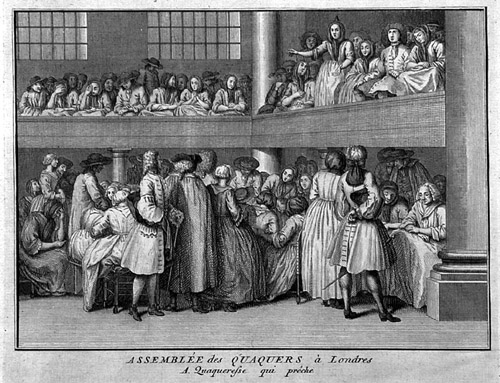
WOMEN’S RIGHTS
What if you were a woman, and the sole expectations from you were to take care of the home, cooking and cleaning, giving birth to children and caring for them?
Between 1820 and 1860 an ideology was developed that historians have referred to as ‘The Cult of True Womanhood.’ It tied a woman’s virtue to piety, submissiveness, and domesticity.
At that time, women did not have a voice in politics and were not considered capable of reasoning in the way men were. Men’s potential for military service justified their right to have a voice in politics.
But more and more women felt they should be considered equals. They were capable of a lot more than household duties. In response, the suffragist movement started in the United States around 1850, much of it led by Quakers. This was because women and men in the Quaker belief were considered spiritual equals. Women were allowed to speak out during worship.
Women with this Quaker background—confident of the justness of gender equality, became some of the first to start the women’s rights movement. Among these were Susan B. Anthony in the U.S. and Emily Howard Stowe in Canada.
Before going further, we’ll look at the Quaker Movement to show where Anthony and Stowe developed their confidence as women living in a man’s world.
WHAT IS A QUAKER?
“The Religious Society of Friends, also referred to as the Quaker Movement, was founded in England in the 17th century by George Fox. He and other early Quakers, or Friends, were persecuted for their beliefs, which included the idea that the presence of God exists in every person [rather than in church]. Quakers rejected elaborate religious ceremonies, didn’t have official clergy, and believed in spiritual equality for men and women. Quakers, who practice pacifism, played a key role in both the abolitionist and women’s rights movements.” [1]
A number of Quaker beliefs were considered radical, such as women and men being spiritual equals and women being allowed to speak out during worship.
Some considered Fox’s views a threat to society. He was jailed for blasphemy in 1650. Quakerism spread across Britain during the 1650’s, and by 1660 there were an estimated 50,000 Quakers.
Fox spent much of the 1660’s behind bars, and by the 1680’s thousands of Quakers across the British Isles had suffered whippings, torture, and imprisonment.
In 1681, King Charles 11 gave William Penn, a wealthy English Quaker, a large land grant in America to pay a debt owed to his family. Penn went on to found Pennsylvania as a sanctuary for religious freedom and tolerance. Within a few years, several thousand Friends moved there from Britain.
Quakers were early abolitionists. In 1758 Quakers in Philadelphia were ordered to stop buying and selling slaves. By the 1780’s, all Quakers were barred from owning slaves.
Quakers’ dedication and commitment to equality and community led many to become social activists. They stood for Simplicity, Truth, Equality, and Community.
[1] Quakers, www.history.com
This has been Part 21 of the Series A LIFE WORTH LIVING. Read Part 22 – The Suffrage Movement
Leave a Reply